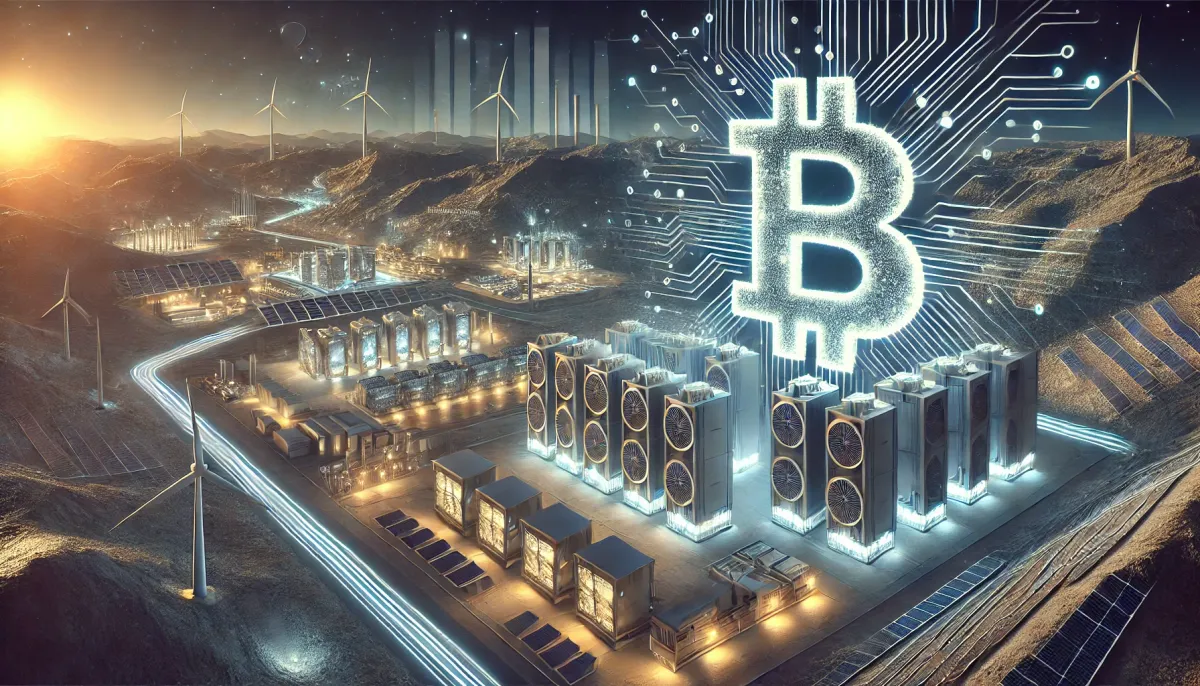Institutional Bitcoin Mining: Innovations and Operational Challenges
The March 20, 2025 episode of Build-a-Mine Podcast with David Gamble explores innovations in institutional Bitcoin mining, emphasizing hosting solutions, strategic placement, and energy reuse technologies.

- My 'briefing notes' summarize the content of podcast episodes; they do not reflect my own views.
- They contain (1) a summary of podcast content, (2) potential information gaps, and (3) some speculative views on wider implications.
Summary
The March 20, 2025 episode of Build-a-Mine Podcast with David Gamble explores innovations in institutional Bitcoin mining, emphasizing hosting solutions, strategic placement, and energy reuse technologies. The discussion highlights regulatory complexities, energy cost challenges, and enhanced market liquidity for mining equipment. These insights underscore the need for adaptive operational and educational strategies in a rapidly evolving landscape.
Take-Home Messages
- Regulatory Adaptation: Clear and flexible frameworks are vital to support scalable institutional Bitcoin mining.
- Energy Efficiency: Optimizing power contracts and integrating renewable solutions can significantly lower operational costs.
- Liquidity Solutions: Developing robust secondary marketplaces improves asset turnover and investor confidence.
- Technological Integration: Embracing innovations such as heat reuse and microgrid systems enhances mining efficiency.
- Investor Education: Comprehensive educational initiatives on custody and operational best practices are essential for market stability.
Overview
The episode features David Gamble from Blockware discussing the operational dynamics of institutional Bitcoin mining. He explains Blockware’s role in offering hosting services and establishing a secondary marketplace for mining rigs. This provides a foundation for understanding how institutional investors can access the mining landscape without building operations from scratch.
Gamble details the significance of strategic geographic placement, emphasizing that selecting optimal locations can improve efficiency and manage risks. The conversation illustrates how diversified site selection, from Eastern Kentucky to other key regions, directly impacts profitability. His insights underscore that geographic diversification is crucial in addressing regional energy cost disparities.
A core theme is the challenge of high electricity costs and the pursuit of innovative energy solutions. The discussion explores integrating renewable energy and utilizing heat reuse, which not only optimize operations but also enhance sustainability. These technological advancements signal a shift toward more efficient and environmentally conscious mining practices.
The conversation concludes with a focus on investor education and market liquidity. Gamble stresses the importance of demystifying Bitcoin mining through clear, accessible guidance on custody and operational practices. This educational approach is pivotal for attracting both institutional and retail investors to the evolving mining ecosystem.
Stakeholder Perspectives
- Institutional Investors: Seek stable returns and clear regulatory guidance while exploring alternative investment opportunities in Bitcoin mining.
- Retail Miners: Prioritize cost-effective energy solutions and streamlined operational models offered through hosting services.
- Technology Providers: Focus on integrating innovations like microgrid systems and heat reuse to drive operational efficiency.
- Regulators: Aim to balance market growth with consumer protection and energy policy compliance.
- Local Communities: Expect mining operations to generate economic benefits and support sustainable energy use.
Implications and Future Outlook
The discussion indicates that regulatory clarity and adaptive operational strategies are essential for scaling institutional Bitcoin mining. Clear frameworks will mitigate risks and enable investors to confidently engage with complex mining operations. This alignment of policy and practice is expected to foster a more resilient and innovative mining ecosystem.
Energy efficiency remains a pivotal factor, as optimizing power contracts and integrating renewable solutions can significantly reduce costs. Such measures will enhance profitability and make Bitcoin mining more accessible to a broader range of investors. The focus on sustainable practices also promises long-term benefits for both operators and local communities.
Market liquidity and investor education are identified as critical drivers for future growth. Improving secondary marketplaces for mining equipment will ease asset turnover and boost market confidence. Enhanced educational outreach will empower investors with the knowledge needed to navigate operational challenges and capitalize on emerging opportunities.
Information Gaps
- How can regulatory frameworks adapt to facilitate institutional Bitcoin mining operations? This question is essential for establishing clear guidelines that support scalable and compliant mining practices.
- What approaches can be implemented to reduce energy cost burdens for retail and institutional miners? Addressing energy expenses is crucial for improving profitability and broadening market participation.
- What market mechanisms can improve liquidity for Bitcoin mining equipment? Enhanced liquidity is necessary to overcome historical challenges in asset turnover within the mining sector.
- What emerging technologies can improve operational efficiency in Bitcoin mining? Investigating innovations such as heat reuse and microgrid systems can drive efficiency and sustainability.
- What are the key technological and regulatory challenges in establishing microgrid Bitcoin mining sites? Understanding these challenges is critical for leveraging decentralized mining opportunities while ensuring compliance.
Broader Implications for Bitcoin
Strategic Energy Management
Optimizing power usage and integrating renewable energy solutions can transform the operational cost structure of Bitcoin mining. Efficient energy management will enhance profitability and competitiveness in the market. This approach also aligns mining operations with broader environmental sustainability goals.
Decentralized Operational Resilience
Adopting decentralized models like microgrid sites can reduce reliance on centralized power infrastructures. Such resilience enhances the flexibility and adaptability of mining operations across different regions. It also mitigates risks associated with regional energy cost fluctuations and regulatory disparities.
Enhanced Market Dynamics
Developing robust secondary marketplaces for mining equipment can improve asset liquidity and market efficiency. This shift will make it easier for both institutional and retail investors to enter and exit positions in the mining sector. In turn, it fosters a more dynamic and transparent market environment.



Comments ()